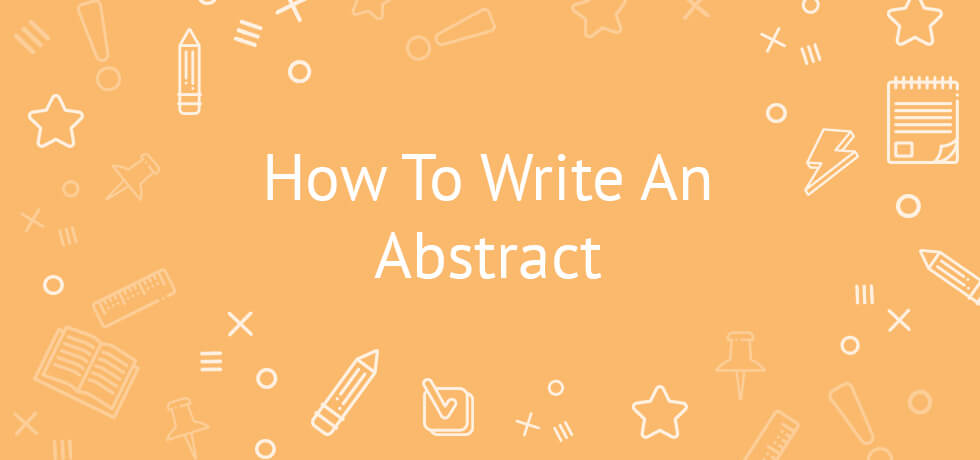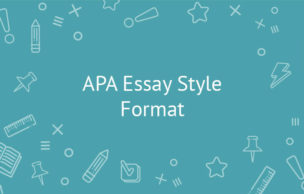How to Write an Abstract For an Academic Paper

Whenever you are given a task to write a scientific or academic paper, you are also often expected to write an abstract. This is especially the case when it is the first time when you are facing a task of writing a certain kind of paper – for example, a dissertation. It can be confusing in its own right. And then you are also asked to write an abstract, so you get two tasks instead of one. The very word “abstract” can make some people panic. So, first of all, let us clarify what an abstract actually is.
If you have to write an abstract, it is no reason to panic at all. An abstract is a stand-alone piece of writing that briefly summarizes the paper. It is made for the convenience of others who intend to read your paper, as a short overview thereof and a description of what you did in the paper, e.g. whether in was a field study or a literature analysis. It is meant for your potential reader to get a bit of an understanding of what your paper is and whether it is interesting to them before they read it.
Naturally, before you can write an abstract, you need a paper to summarize in it. So, the paper is your primary objective, and you move on to the abstract only upon completing the paper itself. Since you have already written your work, writing an abstract should be no big deal. Just describe your purpose, problem, methods, results, and conclusion in accordance with the format guidelines provided by your school.
Here is a step-by-step guide for writing an abstract of your academic paper:
STEP 1: HAVE YOUR PAPER READY FIRST
If your paper is supposed to come with an abstract, then the abstract will be placed at the beginning of the document. When we read someone's paper, we first see the abstract when we open it, before we move onto the paper itself. This misleads some students into writing the abstract prior to writing the paper properly. As we know, we begin the paper with an introduction. But when we write the abstract first, we write there what is supposed to be in the introduction, and then we get stuck not knowing what to write in the introduction.
The abstract is also not to be confused with the thesis statement. These are entirely different things, mainly in their goal. A thesis statement is an integral part of the paper that sets up its main idea or question. An abstract, on the contrary, is technically a separate article that summarizes the whole body of the text, including the outcome.
STEP 2: THINK ABOUT WHO YOU ARE WRITING FOR
The guidelines for your work should specify whether the abstract is only written for your professor or for a larger audience. Remember that the abstract is what “sells” your work, so you should know who you are selling it to. So, keep your audience in mind.
STEP 3: DECIDE WHAT KIND OF ABSTRACT YOU WANT
There are two types of abstracts: they can be either descriptive or informative. Sometimes, your professor will tell you which kind of an abstract should come with your paper, but sometimes this choice will be up to you.
A descriptive abstract is a shorter one, and it is normally applied for shorter papers. It will talk about your work's purpose, goal, and methods. The results are usually not specified in a descriptive abstract. The whole piece usually does not exceed 200 words.
An informative abstract, on the other hand, is written for bigger papers. Here, you take the most important parts of your whole paper, including the results, and condense them into one piece which may be as long as a whole page.
There is actually a third kind of abstract – critical. It has the same goals as a descriptive or informative abstract and is done the same way, but the difference is that here you summarize someone else's work, not yours. You showcase how what relevance other author's work has to your own research, and possibly give some critique. This kind of abstract, however, is seldom assigned to students.
STEP 4: MOVE ON TO WRITING YOUR ABSTRACT
First of all, you need to clarify to yourself why you are even doing this. If your paper is about alcohol intoxication, your reader will want to know why it matters, how it relates to you, and what the purpose of your research is. So, when writing your abstract, keep in mind the following questions:
- What motivated me to take on this topic?
- How did I research the issue?
- What have I found out?
- Why is my research important?
- Why should others be interested in my research?
As you begin to write you abstract, first explain the problem that you are tackling in your paper. You describe this problem as a specific or general one. Then, you state your main argument. Sometimes, you can combine the problem description with the explanation of your motivation, but this is a rare occasion. More often than not, you will talk about your motivation separately. After that, you talk about your methods. You mention whether it was a field work or you were reviewing the works of others and describe your approach. Then you list the evidence that you have collected to support your main argument, as well as the brief overview of the sources where you have found this evidence.
If you are writing an informative abstract, you are to describe the results of your research. You briefly describe what you have found out in the course of your research and how your argument was supported (or not).
In conclusion, you discuss the importance and relevance of your study, the meaning of the outcomes of your research. And so, this conclusion is the closing part of your abstract.
STEP 5. FORMAT YOUR ABSTRACT PROPERLY
Check if your abstract has a clear, logical structure. This structure should be the same as with most other academic papers: the introduction, the main body, and the conclusion - because basically, your abstract mimics your paper, only in a very laconic form. If your professor gave you any specific questions that should be answered in your abstract, make sure that they are answered. If you were supplied with any specific format guidelines to follow in your abstract, make sure you follow them to the letter.
Double-check to ensure that no smallest portion of your abstract sounds ambiguous or vague. While some paragraphs of the paper itself are allowed to be intentionally vague – to engage the reader, abstract works differently – it should inform the reader exactly what they are to deal with, should they choose to read the actual paper. So, no ambiguity can be allowed here. Briefness is crucial. If possible, avoid using too specific terminology or acronyms, because explaining them will take the precious place. Do not refer to any names, unless you are positive that they are generally well-known. An abstract is also no place for long quotations, tables, figures, or any other reference materials and infographics.
All that is left now is to proofread and finalize your draft. And – you're good to go!





